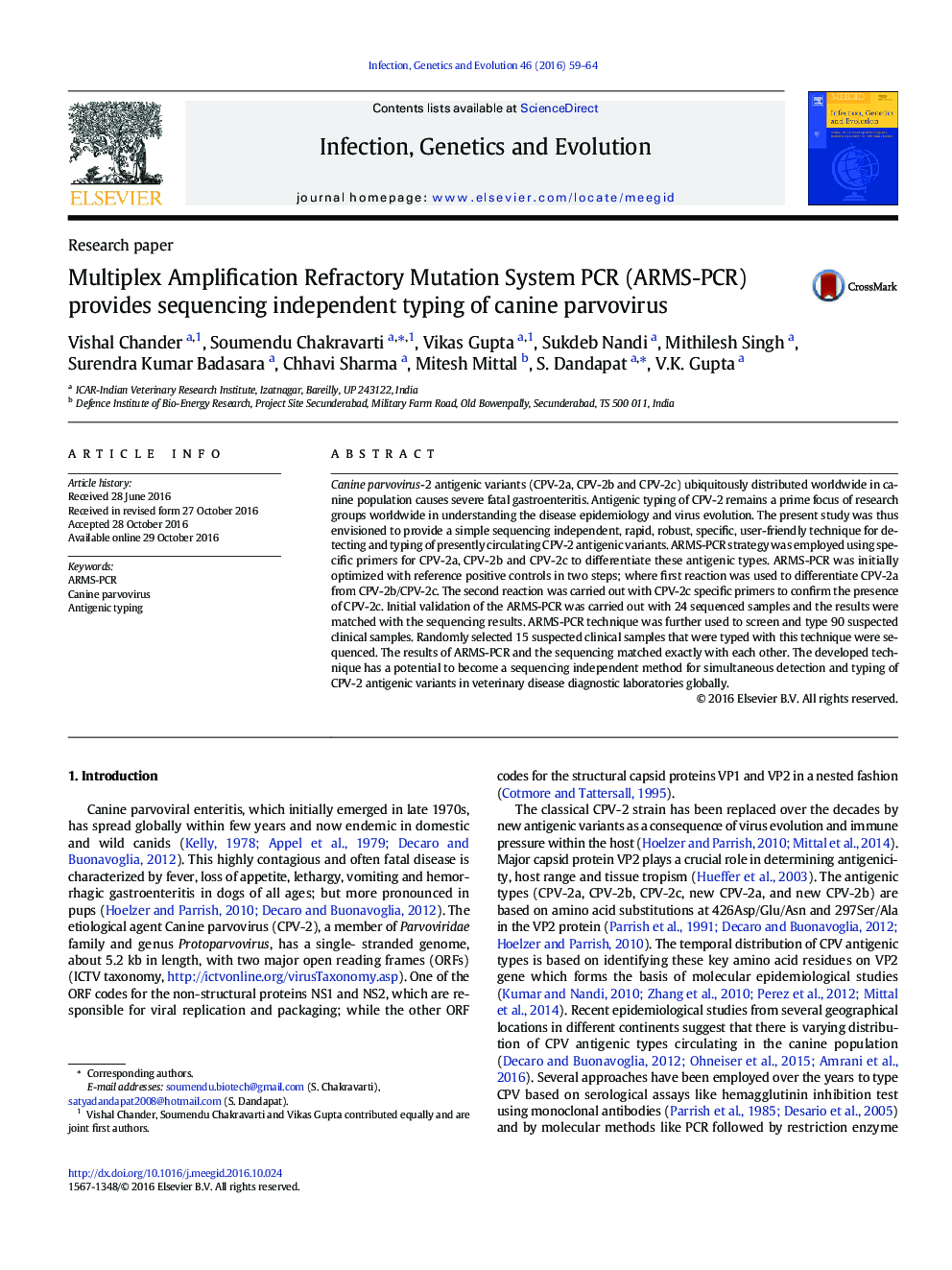| Article ID | Journal | Published Year | Pages | File Type |
|---|---|---|---|---|
| 5590692 | Infection, Genetics and Evolution | 2016 | 6 Pages |
â¢Simultaneous detection and antigenic typing of canine parvovirus-2 (CPV-2) variants, CPV-2a, CPV-2b and CPV-2c was carried out by Amplification Refractory Mutation System-PCR (ARMS-PCR)â¢ARMS-PCR, a simple cost-effective sequencing independent technique accurately typed CPV-2 variants from positive plasmid DNA controls, repository samples and suspected clinical materialâ¢Findings of ARMS-PCR also corroborated with sequencing results of representative samples from all the antigenic types when sequenced in Automated DNA Sequencerâ¢ARMS-PCR can become a method of choice for simultaneous detection and antigenic typing of CPV-2 in veterinary diagnostic laboratories worldwide
Canine parvovirus-2 antigenic variants (CPV-2a, CPV-2b and CPV-2c) ubiquitously distributed worldwide in canine population causes severe fatal gastroenteritis. Antigenic typing of CPV-2 remains a prime focus of research groups worldwide in understanding the disease epidemiology and virus evolution. The present study was thus envisioned to provide a simple sequencing independent, rapid, robust, specific, user-friendly technique for detecting and typing of presently circulating CPV-2 antigenic variants. ARMS-PCR strategy was employed using specific primers for CPV-2a, CPV-2b and CPV-2c to differentiate these antigenic types. ARMS-PCR was initially optimized with reference positive controls in two steps; where first reaction was used to differentiate CPV-2a from CPV-2b/CPV-2c. The second reaction was carried out with CPV-2c specific primers to confirm the presence of CPV-2c. Initial validation of the ARMS-PCR was carried out with 24 sequenced samples and the results were matched with the sequencing results. ARMS-PCR technique was further used to screen and type 90 suspected clinical samples. Randomly selected 15 suspected clinical samples that were typed with this technique were sequenced. The results of ARMS-PCR and the sequencing matched exactly with each other. The developed technique has a potential to become a sequencing independent method for simultaneous detection and typing of CPV-2 antigenic variants in veterinary disease diagnostic laboratories globally.
